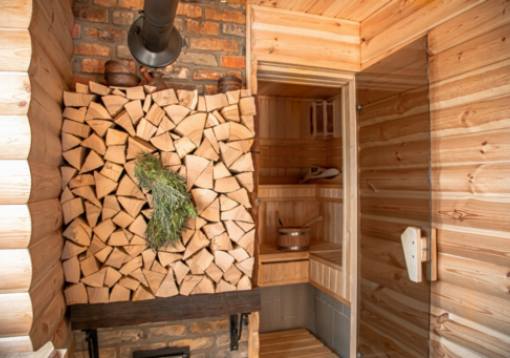Creating a comfortable and relaxing sauna experience relies heavily on proper ventilation and insulation techniques. By maximizing heat retention within the sauna building, understanding the airflow dynamics, and implementing energy-efficient heating strategies, sauna owners can enjoy a more efficient and sustainable heat source. In this article, we will explore these crucial elements to help you make the most of your sauna experience.

Insulation Techniques to Maximize Heat Retention in Sauna Buildings
Saunas are a popular feature in many homes and provide a space for relaxation and rejuvenation. To ensure that your sauna stays warm and comfortable, it is important to maximize heat retention through proper insulation techniques.
One effective insulation technique for sauna buildings is to use high-quality insulation materials, such as mineral wool or fiberglass, in the walls, ceiling, and floor. These materials help to trap heat inside the sauna, preventing it from escaping and ensuring that the space stays warm for longer periods of time.
Another important factor to consider when insulating a sauna is to eliminate any gaps or cracks where heat can escape. This can be done by sealing joints and seams with airtight materials, such as caulking or weather-stripping, to create a tight thermal envelope.
In addition to insulating the walls, ceiling, and floor, it is also important to insulate the sauna door. A well-insulated door with a tight seal will prevent heat from escaping and help to maintain a consistent temperature inside the sauna.
By incorporating these insulation techniques, sauna owners can maximize heat retention in their buildings, creating a warm and comfortable environment for relaxation and rejuvenation.
Understanding Airflow Dynamics in Wood-Burning Saunas
Wood-burning saunas are a popular choice for many homeowners due to the traditional and authentic experience they provide. However, in order to optimize the heating efficiency of a wood-burning sauna, it is essential to understand the airflow dynamics within the space.
The key to efficient heating in a wood-burning sauna lies in proper ventilation. When using a wood-burning stove to heat the sauna, it is important to ensure that there is adequate airflow to allow the smoke and gases produced by the burning wood to escape. Insufficient ventilation can result in poor air quality inside the sauna, as well as decreased heating efficiency.
One important aspect of airflow dynamics in a wood-burning sauna is the design and placement of the stove. The stove should be positioned in a way that allows for optimal airflow, with sufficient space around the stove for air to circulate. Additionally, the chimney should be properly sized and installed to ensure that smoke is efficiently removed from the sauna.
In addition to proper stove placement and chimney design, it is also important to consider the layout of the sauna room itself. Airflow can be optimized by strategically placing vents or windows to allow for cross ventilation, which can help distribute heat more evenly throughout the space.
By understanding and optimizing airflow dynamics in a wood-burning sauna, homeowners can ensure that their sauna is heated efficiently and effectively, providing a comfortable and enjoyable experience for all users.
Energy-Efficient Heating Strategies for Sauna Owners
However, heating a sauna can be expensive and inefficient if not done properly. By implementing energy-efficient heating strategies, sauna owners can enjoy the benefits of their sauna while minimizing their energy costs.
One of the most effective energy-efficient heating strategies for sauna owners is to install a high-quality and properly sized sauna stove. Choosing a stove that is the right size for the sauna ensures that it can heat the space efficiently without wasting energy. Additionally, modern sauna stoves are designed to burn wood or use electricity in a way that maximizes heat output while minimizing fuel consumption.
Another energy-efficient heating strategy for sauna owners is to properly insulate the sauna building. By ensuring that the walls, ceiling, and door of the sauna are well-insulated, heat retention is improved and the sauna can be heated more quickly and efficiently. This not only reduces the amount of energy needed to heat the sauna but also helps maintain a comfortable temperature inside the sauna for longer periods of time.
Sauna owners can also optimize their heating strategy by using a timer or programmable thermostat to control the temperature of the sauna. By programming the sauna to heat up just before it will be used and then automatically turn off when not in use, energy can be saved without sacrificing comfort. Additionally, sauna owners can consider using heat recovery systems to capture and reuse heat that would otherwise be lost, further improving energy efficiency.
In conclusion, sauna owners can maximize their energy efficiency and minimize their heating costs by implementing a combination of strategies such as choosing the right stove, insulating the sauna building, and using timers or heat recovery systems. By taking these steps, sauna owners can enjoy the benefits of their sauna while being mindful of their energy consumption.
